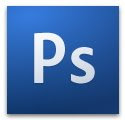

Workspace overview
You create and manipulate your documents and files using various elements such as panels, bars, and windows. Any arrangement of these elements is called a workspace. When you first start an Adobe Creative Suite component, you see the default workspace, which you can customize for the tasks you perform there. For instance, you can create one workspace for editing and another for viewing, save them, and switch between them as you work.
You can restore the default workspace at any time by choosing the default option on the Window > Workspace menu.
Although default workspaces vary across Flash, Illustrator, InCopy, InDesign, and Photoshop, you manipulate the elements much the same way in all of them. The Photoshop default workspace is typical:
The menu bar across the top organizes commands under menus.
The Tools panel (called the Tools palette in Photoshop) contains tools for creating and editing images, artwork, page elements, and so on. Related tools are grouped together.
The Control panel (called the options bar in Photoshop) displays options for the currently selected tool. (Flash has no Control panel.)
The Document window (called the Stage in Flash) displays the file you’re working on.
Panels (called palettes in Photoshop) help you monitor and modify your work. Examples include the Timeline in Flash and the Layers palette in Photoshop. Certain panels are displayed by default, but you can add any panel by selecting it from the Window menu. Many panels have menus with panel-specific options. Panels can be grouped, stacked, or docked.
View full size graphic
Default Photoshop workspace
A. Document window
B. Dock of panels collapsed to icons
C. Panel title bar
D. Menu bar
E. Options bar
F. Tools palette
G. Collapse To Icons button
H. Three palette (panel) groups in vertical dock
Default Photoshop workspace
- A.
- Document window
- B.
- Dock of panels collapsed to icons
- C.
- Panel title bar
- D.
- Menu bar
- E.
- Options bar
- F.
- Tools palette
- G.
- Collapse To Icons button
- H.
- Three palette (panel) groups in vertical dock
Hide or show all panels
- (Illustrator, InCopy, InDesign, Photoshop) To hide or show all panels, including the Tools panel and options bar or Control panel, press Tab.
- (Illustrator, InCopy, InDesign, Photoshop) To hide or show all panels except the Tools panel and options bar or Control panel, press Shift+Tab. You can temporarily display panels hidden by these techniques by moving the pointer to the edge of the application window (Windows) or to the edge of the monitor (Mac OS) and hovering over the strip that appears.
- (Flash) To hide or show all panels, press F4.
Display panel menu options
 Position the pointer on the panel menu icon in the upper-right corner of the panel, and press the mouse button.
Position the pointer on the panel menu icon in the upper-right corner of the panel, and press the mouse button.(Illustrator) Adjust panel brightness
In User Interface preferences, move the Brightness slider. This control affects all panels, including the Control panel.
Reconfigure the Tools panel
You can display the tools in the Tools panel in a single column, or side by side in two columns.
In InDesign, you also can switch from single-column to double-column display by setting an option in Interface preferences.
Click the double arrow at the top of the Tools panel.

No comments:
Post a Comment